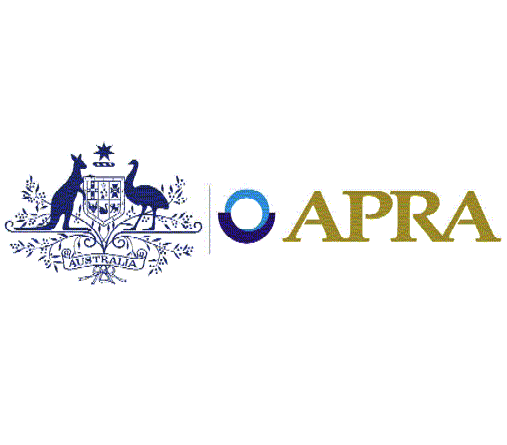Financial regulation is a form of regulation or supervision, which subjects financial institutions to certain requirements, restrictions and guidelines, aiming to maintain the integrity of the financial system. This may be handled by either a government or non-government organization. There are many purposes of why these institutions are created, these are some of the important ones:
- Prudential regulation
- to maintain the market confidence in the financial system
- Financial Stability - contributing to the protection and enhancement of stability of the financial system
- Consumer Protection
- Reduction of financial crime
Now that we know what is the regulation of financial markets and why is it important, let's start going into detail of what these institutions actually do.
Australian Prudential Regulation Authority (APRA)
 |
| Figure 1.1 | APRA Logo |
The Australian Prudential Regulation Authority (APRA) is a statutory authority of the Australian Government and the prudential regulator of the Australian financial services industry. APRA was established on 1 July 1998 in response to the recommendations of the Wallis Inquiry. Their role is to protect the financial well-being of the Australian community by reducing fraud and unfair practices in financial markets and products. It promotes prudent behaviour by banks, insurance companies, superannuation funds and other financial institutions with the key aim of protecting the interests of their depositors, policy holders and fund members.
Australian Securities and Investments Commission (ASIC)
 |
| Figure 1.2 | ASIC Logo |
The Australian Securities & Investments Commission (ASIC) is an independent Australian government body that acts as Australia's corporate regulator. ASIC was also established on 1 July 1998 in response to the recommendations of the Wallis Inquiry. Its role is to maintain, facilitate and improve the performance of the financial system by encouraging people - both businesses and consumers, to participate in the financial system and providing information to them to improve their decision making to get them to increase the chance of investors participating and reducing the chances of failure. They also carry out the legal procedures and carry out legal assistance for the courts and restricting credit activity and financial services usage.
Reserve Bank of Australia (RBA)
 |
| Figure 1.3 | RBA Logo |
The Reserve Bank of Australia (RBA) came into being on 14 January 1960 as Australia's central bank and banknote issuing authority, it task is to provide services to the Government of Australia in addition to also providing services to other central banks and official institutions. The RBA plays significant role in the financial market and here are some of their main roles:
- Monetary Policy (most important) - adjusting the cash rate, the cash rate influences other interest rates in the economy, affecting the behaviour of borrowers and lenders, economic activity and ultimately the rate of inflation.
- Maintain the stability of the currency of Australia;
- The maintenance of full employment in Australia
- Improve the efficiency of the payment systems
- Looking after Banknotes and ensure that it is in good conditions
Australian Treasury
 |
Figure 1.4 | Australia Treasury Logo
|
The Australian Treasury's goal is to provide information about economy to everyone in Australia. The reason for this is because they want to improve the well-being of the Australian people, including by achieving strong, sustainable economic growth, through the provision of advice to government and the efficient administration of federal financial relations. The Australian Treasury provides information such as the condition of the country's economic and the forecast of the economic growth.
Council of Financial Regulators (CFR)
| Figure 1.5 | CFR Logo |
The Council of Financial Regulators (CFR) is the coordinating body for Australia's main financial regulatory agencies. It is a non-statutory body whose role is to contribute to the efficiency and effectiveness of financial regulation and to promote stability of the Australian financial system. The CFR has no actual power, rather a combined power of the members which are the APRA, ASIC, RBA(chair) and the Australian Treasury. In the CFR, members share information, discuss regulatory issues and, if the need arises, coordinate responses to potential threats to financial stability. The CFR also advises Government on the adequacy of Australia's financial regulatory arrangements.
To sum up our first lesson, we have learnt what is the Regulator of Financial Market, which includes Australian Treasury, RBA, ASIC, APRA and CFR and what does each bodies does, what do they do to achieve it's goal and how important these institutions are to Australia's economic.